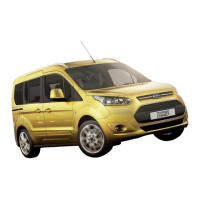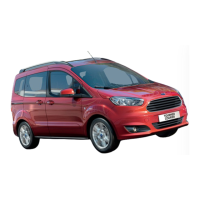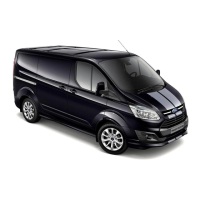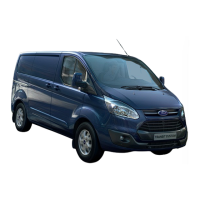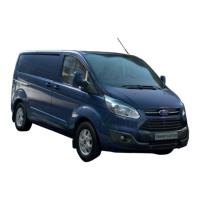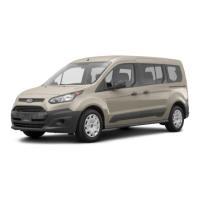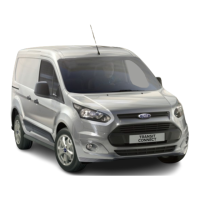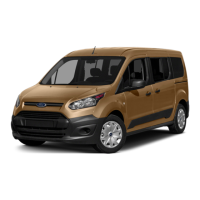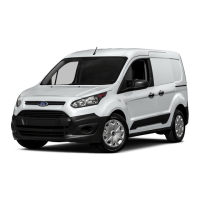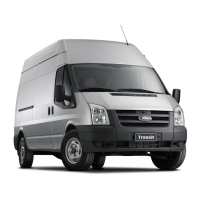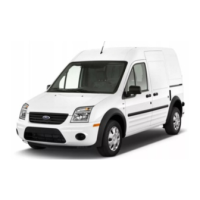Speed range
You can set a speed between 20 km/h
(15 mph) and 210 km/h (130 mph). This
speed range may dier in certain countries.
Driving with Adaptive Cruise Control
You can override Adaptive Cruise Control at
any time. Control will be cancelled if you
brake. If you accelerate, the system will be
interrupted for the duration of the accelera-
tion process and will then continue again.
Control by the Adaptive Cruise Control sys-
tem is less dynamic when towing a trailer.
Driver intervention prompt
If the automatic deceleration by
Adaptive Cruise Control is not su-
cient or the system limits are
reached, the Adaptive Cruise Control
system will display a message on the
instrument cluster requesting you to
brake additionally. In addition, the red
warning lamp lights up and an acous-
tic warning is given. Take control of
the vehicle and be prepared to apply
the brakes!
Radar sensor
Adaptive Cruise Control detects driving sit-
uations by means of the radar sensor at the
front of the vehicle. The range of the radar
sensor is up to approximately 160 m
(around 520 ).
WARNING
The intelligent technology of the Adaptive
C
ruise Control system cannot overcome
the laws of physics, and functions only
within the limits of the system. Never let
the extra convenience tempt you into tak-
ing safety risks when driving. Careless or
unintentional use of Adaptive Cruise Con-
trol can cause accidents and serious inju-
ries. The system is not a substitute for the
full concentration of the driver.
·
Adapt your speed and distance from
the vehicles ahead to suit visibility,
weather, road and trac conditions.
·
Never use Adaptive Cruise Control in
poor visibility, on steep or winding
roads, or on slippery road surfaces, e.g.
due to snow, ice, wet roads, loose chip-
pings, or on flooded roads.
·
Never use A
daptive Cruise Control o-
road or on unsurfaced roads. Adaptive
Cruise Control is designed solely for use
on surfaced roads.
·
Take control of the vehicle immediately
if a driver intervention prompt appears
on the instrument cluster display or if
Adaptive Cruise Control does not re-
duce the speed suciently.
·
Apply the brakes if the vehicle starts
rolling unintentionally, e.g. aer a driver
intervention prompt.
·
Be prepared to control the speed your-
self at all times.
Special driving situations
Please refer to at the start of the
chapt
er on page 161.
The functions described below depend on
the vehicle equipment and are not availa-
ble in all countries.
Overtaking
If you are indicating le (or right when driv-
ing on the le) to overtake, Adaptive Cruise
Control will accelerate the vehicle and re-
duce the gap to the vehicle in front. The
system will not exceed the speed you have
stored.
If Adaptive Cruise Control has not detected
a vehicle in front once you have changed
lanes, the vehicle will accelerate up to the
selected speed.
Stop-and-go trac
Adaptive Cruise Control can brake the vehi-
cle to a standstill and hold it stationary.
Adaptive Cruise Control remains active and
the instrument cluster display shows
Adaptive Cruise Control ready to start for
a few seconds.
Vehicles with Adaptive Cruise Control with
Lane Centring: You can extend this time by
continuing to hold the steering wheel.
As long as Adaptive Cruise Control remains
active, the vehicle will move o again auto-
matically as soon as the vehicle in front
moves o.
162
Driver assist systems
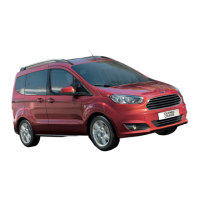
